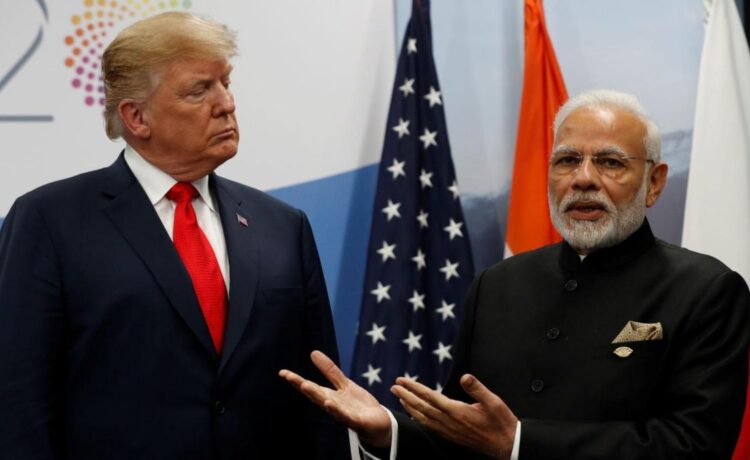When Prime Minister Narendra Modi meets US President Donald Trump on February 13, 2025, one of the key issues on the agenda will be de-dollarisation, BRICS expansion, and global economic cooperation.
Position on De-Dollarisation
India has been firm in its position regarding the ongoing global conversation around de-dollarisation’s the process of reducing reliance on the US dollar in international trade. Despite discussions among BRICS (Brazil, Russia, India, China, South Africa) countries about using local currencies for trade, India has made it clear that it does not have a policy or strategy aimed at moving away from the US dollar.
Ministry of External Affairs (MEA) spokesperson, Randhir Jaiswal, stated, “On de-dollarisation, the External Affairs Minister has made it clear that we don’t have any policy or strategy in this regard.” This aligns with earlier statements from External Affairs Minister, S Jaishankar, who clarified, “We have never actively targeted the dollar. That’s not part of either our economic policy or our political or strategic policy.”
While India acknowledges the idea of reducing dollar reliance, particularly in trade with countries affected by US sanctions, it remains cautious about fully acceptance de-dollarisation. This careful approach is a response to the rise of the Chinese yuan, which some BRICS members have explored as an alternative to the dollar. However, India has not supported the use of the yuan for its own trade, including when importing oil from Russia.
BRICS and Trump
BRICS nations have been exploring alternatives to the US dollar for years, with President Vladimir Putin of Russia advocating for more trade in local currencies at the 2023 BRICS Summit. However, creating a new BRICS currency remains a distant goal. The group does not have a unified trade policy or a common market like the European Union, which makes it difficult to create a single currency.
India has distanced itself from these discussions, as it remains focused on strengthening its economic cooperation through mechanisms that do not undermine the US dollar’s role in global trade. Prime Minister Modi stated that India supports efforts to promote trade in local currencies and smoother cross-border payments, but he stated that India has never actively targeted the US dollar in its trade policies.
US President Donald Trump, however, has taken a hard stance against any attempt by BRICS countries to replace the dollar. On social media, he threatened, “We are going to require a commitment from these seemingly hostile countries that they will neither create a new BRICS Currency, nor back any other currency to replace the mighty US Dollar or, they will face 100% Tariffs”. Trump has repeatedly warned that any move to reduce reliance on the US dollar will result in severe economic consequences, including the imposition of tariffs.
India’s cautious stance on de-dollarisation is also shaped by its interest in maintaining economic stability and balancing its relationships with both the US and other BRICS countries. While India supports initiatives for trade in local currencies, it is wary of China’s growing economic influence in BRICS.
Ajay Sahai, CEO of the Federation of Indian Export Organisations (FIEO), pointed out that India must ensure the local currency initiatives do not disproportionately favour China. He highlighted that India values its relationship with the US and seeks diplomatic solutions to address economic differences, focusing on negotiation rather than confrontation.
While the BRICS bloc has increased its cooperation in areas like trade and finance, India continues to balance its domestic priorities with its global obligations.

















